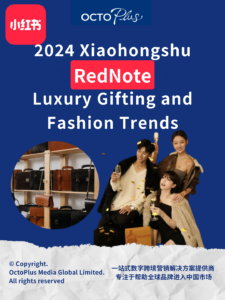China Marketing Insights Monthly Newsletter [May 2020]



Hello,
Welcome to our May Newsletter.
Another month has passed, China concluded its first major holiday beginning of the month and the statistics are very encouraging – 115 Million domestic tourists generating over 5.7 Billion in revenue, not bad when you consider most attractions that were opened were operating at only 30% capacity maximum limit. More positives – Shanghai Disneyland’s tickets sell out within minutes ahead of May 11 reopening; more hotels & airlines resume full operations – IHG, Hilton, Kempinski, Delta, United, etc.!
In this issue we bring you more about live-streaming – we just completed the first-ever overseas WeChat live streaming for Hong Kong’s biggest cosmetic retail chain- Sa Sa!
We look at key insights from CNNIC’s internet report, cultural tourism report post-COVID-19 and how China might be reshaping the luxury market (again) & could account for 50% of worldwide sales. Finally, in our App of the month, we look at Kuaishou & the tale of how GREE chairwoman sold over US$43.8 million of goods in a three-hour live-streaming!
Sincerely,
Mia C. Chen
CEO & Co-Founder of OctoPlus Media

FIRST OVERSEAS CROSS-BORDER E-COMMERCE LIVE STREAMING
While live-streaming has been gaining popularity, no overseas WeChat live-streaming has been done – that is – until now! On May 5, 2020, We (OctoPlus Media) planned and executed the first-ever overseas WeChat live streaming of cross-border e-commerce for SaSa in Hong Kong. The two-hour live streaming attracted 33k viewers, 12k comments and 25k likes.
Affected by COVID-19, more people stayed at home during the Labor Day holiday than in previous years, leading to a new round of demand for “live streaming shopping”. “Watching live streaming+online shopping” has undoubtedly become the favourite pastime & consumption mode of Chinese Internet users. 560 million users are watching live broadcasts in China, and nearly half of them (about 265 million people) are using live broadcasts for shopping.

HK SaSa WeChat overseas live streaming invited Phoenix TV host Lin Weijie as the anchor and partner with SaSa’s own beauty consultant, which attracted the attention and support of many consumers. To enhance the interactive nature of the live broadcast, there have promotional activities and sent benefits to consumers with the online lottery. With the support of discount activities and well-known hosts, SaSa WeChat live streaming give consumers an excellent sensory experience and the best shopping experience.
With increasingly strong selling attributes of WeChat E-commerce live streaming, the platform has become more competitive against Taobao live streaming, Kuaishou, Douyin and other major live streaming platforms. Among them, live broadcasting in WeChat ecology has the following three characteristics:
Exclusive private traffic. Taobao’s traffic is public domain traffic which others can bring traffic in. But for WeChat, users will not come from other platforms, will not be lost and not lead to third-party KOLs, which is Exclusive private traffic.
Accurate user base. Most of the live streaming viewers come from fans and communities of the brand WeChat public account, and the users are very sticky. Compared with other live streaming platforms, there are fewer users who frequently enter / exit the live.
High sales conversion rate. The subscription attribute of the WeChat ecosystem is strong, and users are more likely to subscribe and follow. At the same time, the user’s trust relationship with the brand established through the WeChat public account helps to increase the conversion rate. Because the user of the public account first pays attention to the brand through the content, not just for shopping.
l-OctoPlus-Media.png)
SaSa's First-Ever Overseas WeChat Live Streaming

1. CULTURAL TOURISM ECOLOGICAL INSIGHT REPORT – 2020
As faced with the sudden COVID-19 in 2020, all walks of life began to develop digitally, from e-commerce live streaming, Internet medical treatment, online education, to the launch of “travel live streaming” on platforms such as Douyin, Kuaishou, Taobao and MFW. In demand for travel, more and more users are not satisfied with understanding the travel destination by browsing pictures and texts, but more hope to experience it through live video, short video, etc.
Travel live broadcasts not only allow users to “really” see the destination but also experience the correct playing method and the most in-depth experience under the guidance of Travel KOL, official tourism bureau and tourism merchants, to truly “immersive” and “recommendation online”.
At the same time that travel live-streaming meets users’ travel needs, it also brings new opportunities to the tourism industry. For destinations and merchants, travel live-streaming can help them establish long-term channels of communication with users, create high-quality live-streaming content, conduct online marketing, and create and accumulate “online assets.” In addition to the digitization of content, innovative marketing services also help the industry build tourism brands. At the same time, through real-time and interesting interaction with users, users’ “online” and “offline” travel experience can be optimized to serve users better.
Compared with entertainment and lifestyle video platforms, MFW travel live-streaming has higher “purity” and “depth” of tourism information and is dedicated to solving the problem of “what to play” and “how to play” for tourists, to attract users to conduct more in-depth exploration and experience. Data show that the live content of in-depth experience is favoured by 72.88% of users.
The success of MFW travel live-streaming is that it treats the whole world as a live-streaming room. It’s not limited to “selling products”, but also telling you how to play and what new ways to play, which is also an indispensable and important part of the live broadcast. For example, the host “Jing Du Xiao Hu” was live-streaming for Fushimi Inari Taisha in Japan, she helps a Beijing audience to get a fortune stick, and the user excited. While other anchors are still streaming live from the Chengdu panda base, the MFW anchor has begun to take viewers into the delivery room to “meet” the newborn pandas, they bringing a more in-depth “experience” to viewers.
According to the report, Phuket, Kyoto, Antarctic, Osaka, and Colon Island are the most overseas popular destinations for Chinese. In-depth experience travel live-streamings are the most popular among users.
Among the live streaming viewers, the 90’s and 85’s with strong economic strength are the primary users of travel live streaming, accounting for more than 50% of the total, and the 95’s, 00’s and other Gen- Z account for more than 20%.
Source: http://finance.eastmoney.com/a/202005111480742881.html
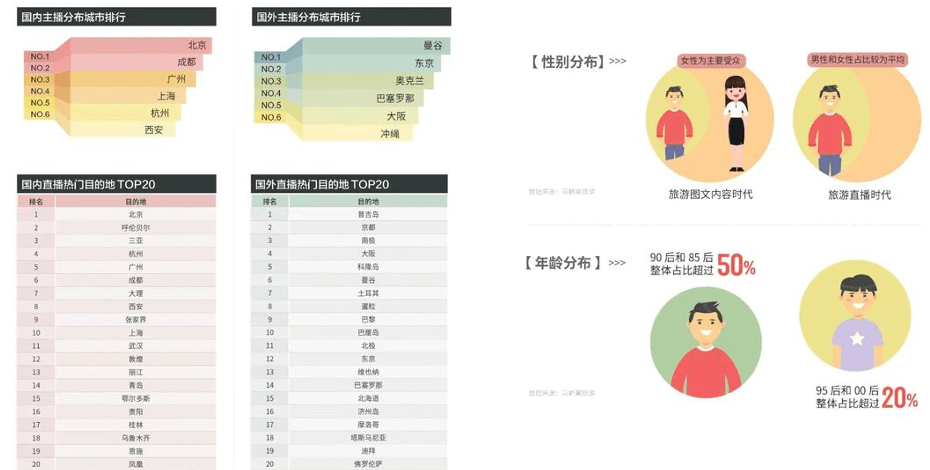
Cultural Tourism Ecological Insight Report – 2020
2. HALF OF THE GLOBAL LUXURY PURCHASED BY THE CHINESE AFTER THE COVID-19?
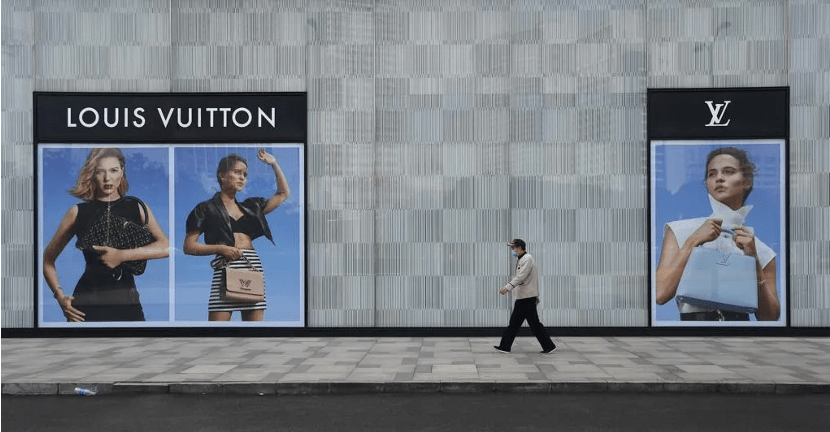
As the impact of COVID-19 continues, and the global luxury goods market has been hit hard. According to the latest report from Bain & Company, overall sales of the worldwide luxury goods market fell by 25% -30% in the first quarter. Still, they expect the luxury goods market to resume growth in 2021, driven by the Chinese market, digitalization, and Generation Y and Generation X consumers.
At the same time, according to Bloomberg News, in the past three weeks, Louis Vuitton’s store sales in mainland China have increased by about 50% over the same period last year. This may indicate that the Chinese luxury goods market has begun to rebound after sales plummeted in the first quarter. In the process of responding to this crisis, six major consumer trends are taking shape.
1. The importance of Chinese consumers in the market has increased. If the epidemic is curbed in China, then luxury consumption may be restarted first in China, and continued travel restrictions will mean that many purchases that used to be done abroad will take place in China.
2. Accelerate the transition to digital shopping. On the premise of maintaining safety, consumers will return to physical stores, but some of the digital shopping habits acquired during the outbreak will persist.
3. The improvement of environmental and social awareness. Consumers’ concerns about sustainable development and social issues will continue. Visionary brands may rethink the product life cycle, supply chain management, and inventory handling issues.
4. Rational mentality. As consumers prioritize brands with attitudes, ethics will become as important as aesthetics.
5. Strengthen pride in the local culture.
6. The enhancement of diverse needs. Because the consumption power of many middle-class consumers has declined, brands need to transform their products at accessible price points.
For now, while the U.S. and Europe need more time to recover, the Chinese are starting to spend again. The global nature of luxury will come back to the fore when things settle down. Brands can even emerge from the crisis stronger. The lessons learned in 2020 can fuel a long-term recovery in 2021 and beyond. The crisis may change the status of the luxury industry, but it could also be a shift for the better.

1. SIX TAKEAWAYS FROM CNNIC’S INTERNET REPORT
The China Statistical report on internet development report has been freshly released by China Internet Network Information Center (CNNIC), It’s about the country’s internet population and the development of different sectors, include Internet infrastructure, netizen scales, online shopping, online education, live-streaming, etc. here are six key takeaways.
- The number of Internet users in China exceeded 900 million.
The report shows that as of March 2020, the number of Chinese netizens has reached 904 million, an increase of 75.08 million compared with 2018; among them, the number of mobile phone netizens is 897 million, with a proportion as high as 99.3%. In other words, it’s more than the entire population of Europe.

- Online education users increased rapidly during the epidemic.
Affected by the COVID-19, all schools have been delayed to open, and teaching activities shifted to online, which also promoted the rapid growth of online education users. By March 2020, the number of online education users in China had reached 423 million, an increase of 222 million from the end of 2018, accounting for 46.8% of the total netizens. The number of daily active users of multiple online education applications has reached more than 10 million, and multiple media platform applications also cross-border online education. Such as DingTalk, Tencent Metting, Huawei, JD, etc. They have all launched online education classes or education systems, to compete in the online education industry.
- Social e-commerce and live streaming e-commerce have become new forces in the growth of online consumption.
Social e-commerce and live streaming e-commerce have become an important support for online consumption. By March 2020, the number of e-commerce live-streaming users had reached 265 million, accounting for 37.2% of online shopping users and 47.3% of live-streaming users.
- Travel and Food delivery apps take a hit.
Affected by the epidemic, the scale and utilization rate of food delivery apps have declined significantly. The same is true for travel bookings, by March 2020, the number of online travel booking users in China was 373 million, a decrease of 37.05 million from 2018. However, with the improvement of the epidemic situation in China and the report of the Chinese Labor Day holiday, It shows that China’s tourism market has rebounded and will be back sooner.
- The number of short video users has increased significantly.
The number of short video users in China has reached 773 million, an increase of 125 million from 2018, accounting for 85.6% of the overall online netizens. Apps like Tiktok and Kwaishou are rapidly expanding overseas market and support sharing videos to international platforms such as Youtube, Facebook and Twitter. The well-known blogger Li Ziqi created some cinematic-quality videos of life in rural China; her videos have drawn in fans all over the world. Currently, she has 10.2 million fans on youtube. She has become a “window” to Chinese culture for overseas internet users.

Liziqi's YouTube Channel
- China government turns to social media for propaganda.
The China government has been ramping up efforts to spread its message to its people through social media. According to the CNNIC report, there are 17,380 government account churning out positive energy short videos on Douyin, also has 82,937 Toutiao accounts and 139k Weibo government accounts.
2. CHINA’S OTT MARKET IS BOOMING
With the rapid popularization of smart TV, the OTT industry has also developed rapidly, so what is OTT? OTT is the abbreviation of “Over The Top” and refers to providing various application services to users through the Internet. This kind of application is different from the current communication service provided by the operator. It only uses the operator’s network, and the service is provided by a third party other than the operator. It can be simply understood as watching TV programs with a TV box or smart TV to watch TV programs connected to the Internet. Currently, participants in the OTT industry chain can be divided into several categories: Content provider, License provider, Platform provider, hardware provider, etc., all of them are part of OTT. Besides, many people confuse OTT and CTV. In short, OTT is the delivery mechanism of video content, while CTV is the device used to access the content.
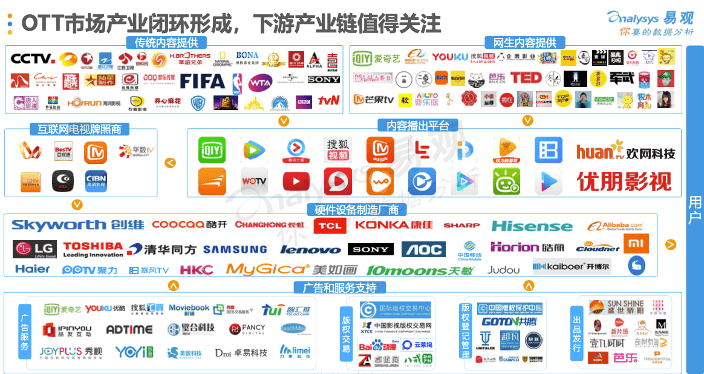
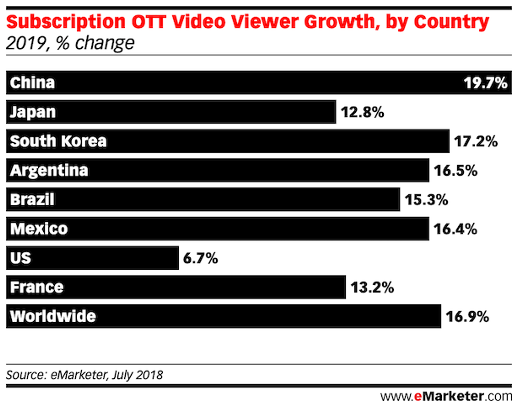
For Chinese netizens, OTT device has become the second-largest online video viewing channel after mobile phones now. The growth rate of OTT users in China is also among the highest in the world, with an increase of 19.7%.
In 2019, more than 52% of Chinese watched TV programs through OTT devices, which reached more than 611 million users. With the growing audience size and accurate delivery format, the OTT advertising market reached 5.5 billion RMB in 2018, with a year-on-year increase of more than 200%. It is expected that the OTT market will continue to grow, and the market size is expected to exceed 30 billion RMB in 2020. According to the report of the 2020 White Paper on Big Screen Ecology of Chinese TV, the OTT interactive platform of the online audience is as high as 32.14%, which is three times as high as that of other platforms. Hisense has the highest proportion, reaching 10.29%.
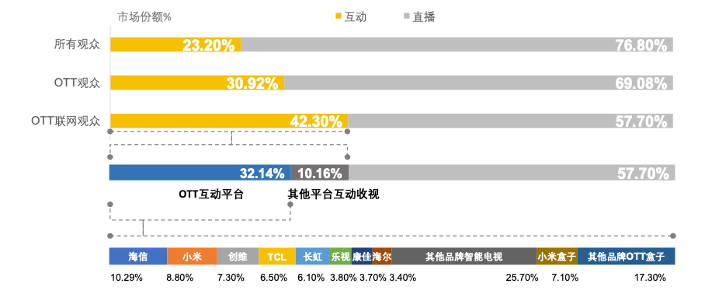
Here is an example of China’s largest OTT, Hisense, to introduce the types of OTT advertising in China. Hisense has ranked No. 1 in China’s market share for 16 consecutive years, which has also established Hisense JUHAOKAN’s market position as China’s largest Internet TV cloud platform. The total global number of activated terminals has reached 43.18 million. JUHAOKAN OTT integrates global content resources to create the best user experience for users. Based on personalized marketing strategies based on content, region and population, it was accurately positioning marketing goals, and comprehensively covering media advertising resources, including Boot ads, Screensaver ads, Mobile Advertising and others.
Hisense JUHAOKAN Ad formats
- Creative boot ads
- Average daily coverage: 50k CPM
- Ad size: 1920*1080
- Ad format: MP4

- Screensaver ads
- Average daily coverage: 160k CPM
- Ad size: 1920*1080
- Ad format: MP4
- Ad quality: 2M

- Mobile ads
- Number of users covered: 1.3 million / 2 million + / 10 million / 9 million


GREE CHAIRWOMAN DONG MINGZHU SOLD 310 MILLION RMB OF GOODS ON SHORT VIDEO PLATFORM KUAISHOU
CASE STUDY OF E-COMMERCE INDUSTRY
Recently, Zhihu launched an E-commerce linkage and live streaming function. In September 2019, Zhihu started the internal test for “Zhuhu Goods Recommended” function. Eligible users can add links to product pages of E-commerce platforms such as T-Mall and JD in Q&A and articles.
“Zhihu Goods Recommend” also established an official account and asked various questions to users. For example, there was a prize question about dressing at home during the epidemic of the COVID-19, users can answer the question and add links to articles and recommend brands or products.
Currently, “Zhihu Goods Recommend” function can link to the product pages of the four platforms of JD, Taobao, Zhihu Mall, and Pinduoduo, It mainly focuses on books, 3C, intelligent living products and other categories, and takes the direction of high-quality product section.
CASE STUDY OF PERSONAL CARE INDUSTRY - PANTENE SHAMPOO CONTENT MARKETING
Live streaming e-commerce has become a new trend for Chinese online shopping; CEOs of many companies entered the live-streaming room to start the live broadcast debut. Gree Electric Appliances chairwoman Dong Mingzhu, known as the mainland’s “home appliances queen”, her first live show was on the Douyin platform. Still, the result was not satisfactory, there were only 220k viewers, and the turnover was only 230k. But recently she sold 310 million RMB (US$43.8 million) of goods in a three-hour live-streaming event on short video platform Kuaishou, within 30 minutes, the sales of the three products had already exceeded 100 million RMB. The successful cooperation between Gree and Kuaishou also attracted more 3C home appliance manufacturers to Kuaishou.

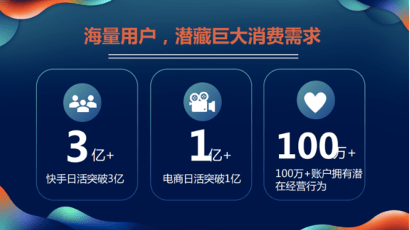
Kuaishou is a short video platform with high-traffic and high-stickiness of fans, with daily active users exceeding 300 million, e-commerce daily active exceeding 100 million, and 1 million+ short video accounts have opened the live-streaming function.
In addition to the huge user base of Kuaishou, Its Feed advertising is also ahead of the industry. It is helping advertisers to find more valuable people, delivering accurately, real-time optimization, providing real-time data feedback and combining a variety of advertising forms to maximize the delivery value.
Why Kuaishou?

As one of the current mainstream short video applications, kuaishou focuses on UGC and focuses on recording and sharing life. It has attracted a large number of users, with over 300 million daily users. There are nearly 20 billion videos in the APP. In 2019, 250 million users posted videos on the Kuaishou platform, and the cumulative likes exceeded 350 billion.
Kuaishou’s user?
The short video platform has become an important channel for young people to acquire content. Among the users of Kuaishou, 80% are 90’s user who is dominated by Gen-Z with rising consumption power.
Kuaishou Marketing Platform
The kuaishou marketing platform is supported by strong background data and good advertising environment to help advertisers find the most valuable groups and make the ads reach users accurately. Optimize advertising in real-time according to unique directional forms such as region, crowd, time, hobbies, etc. With a complete data monitoring background, the platform can provide multi-dimensional & real-time data reports.
-End of the Newsletter-
Feel free to talk to us
It’s a team with one single shared goal, which is our client’s success. Deliver results for your business now.































